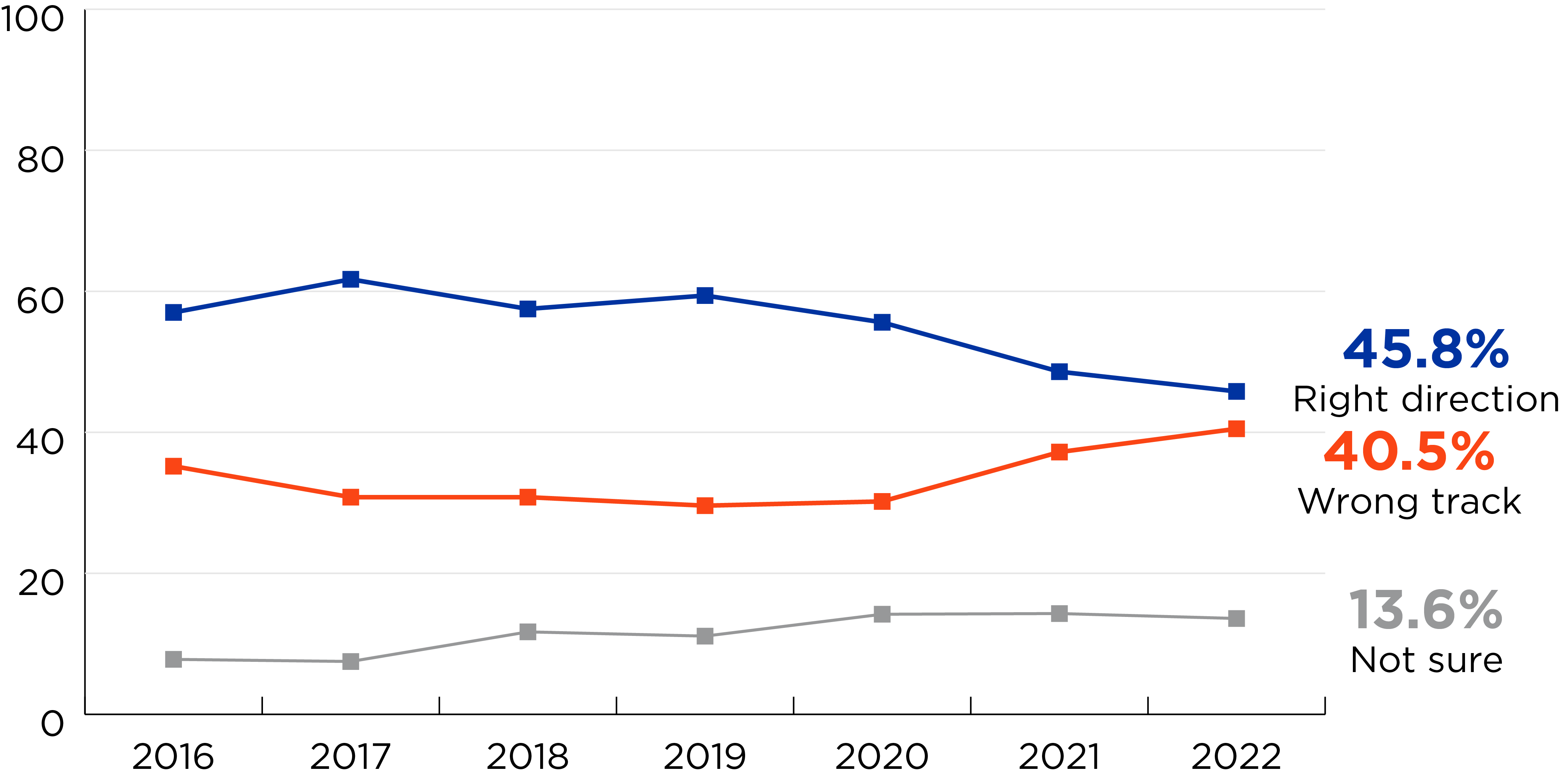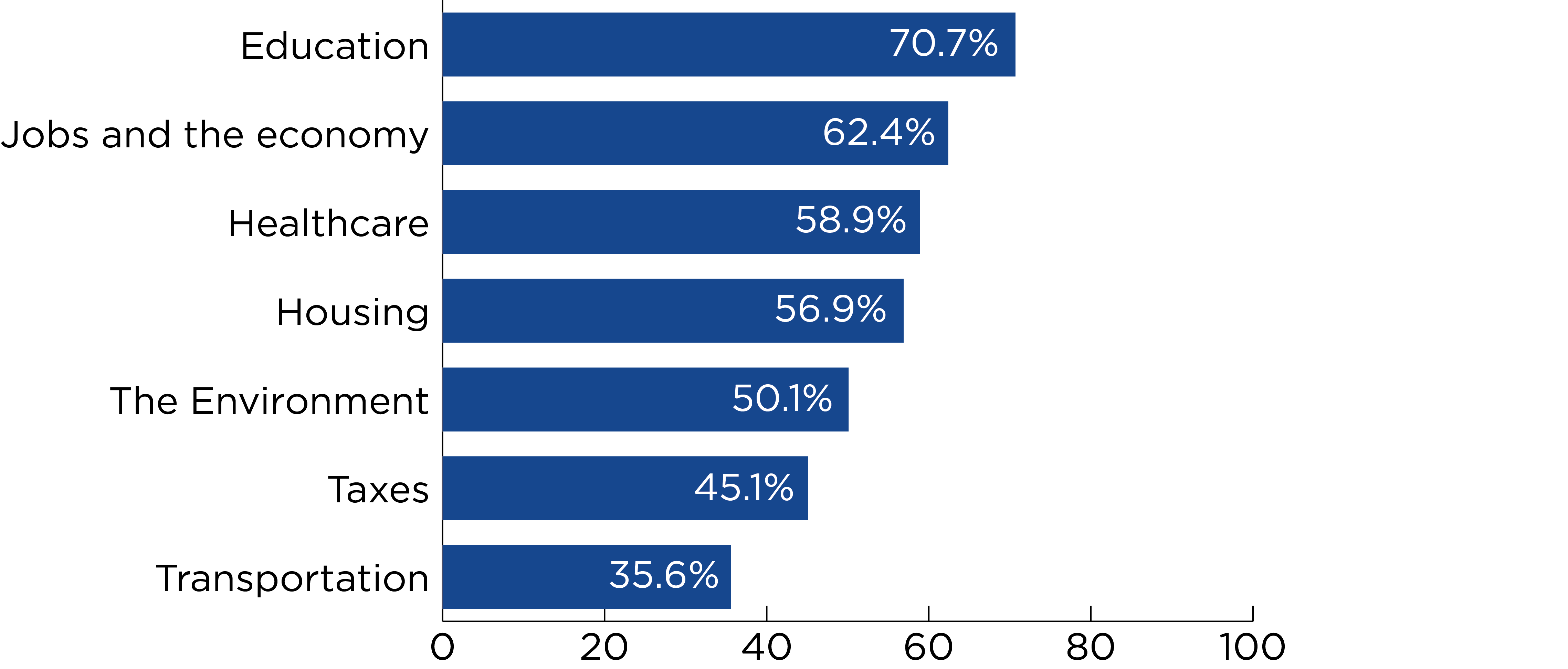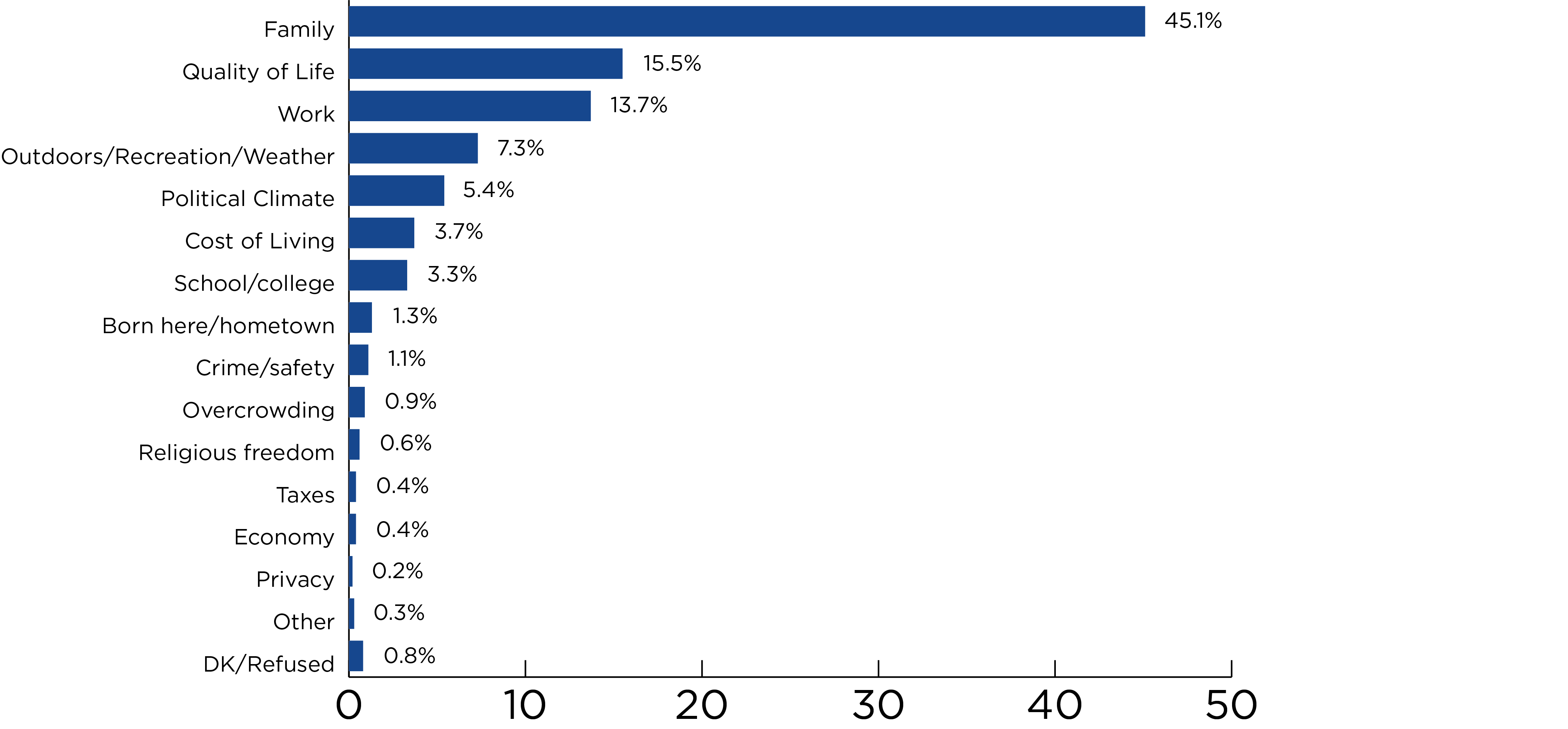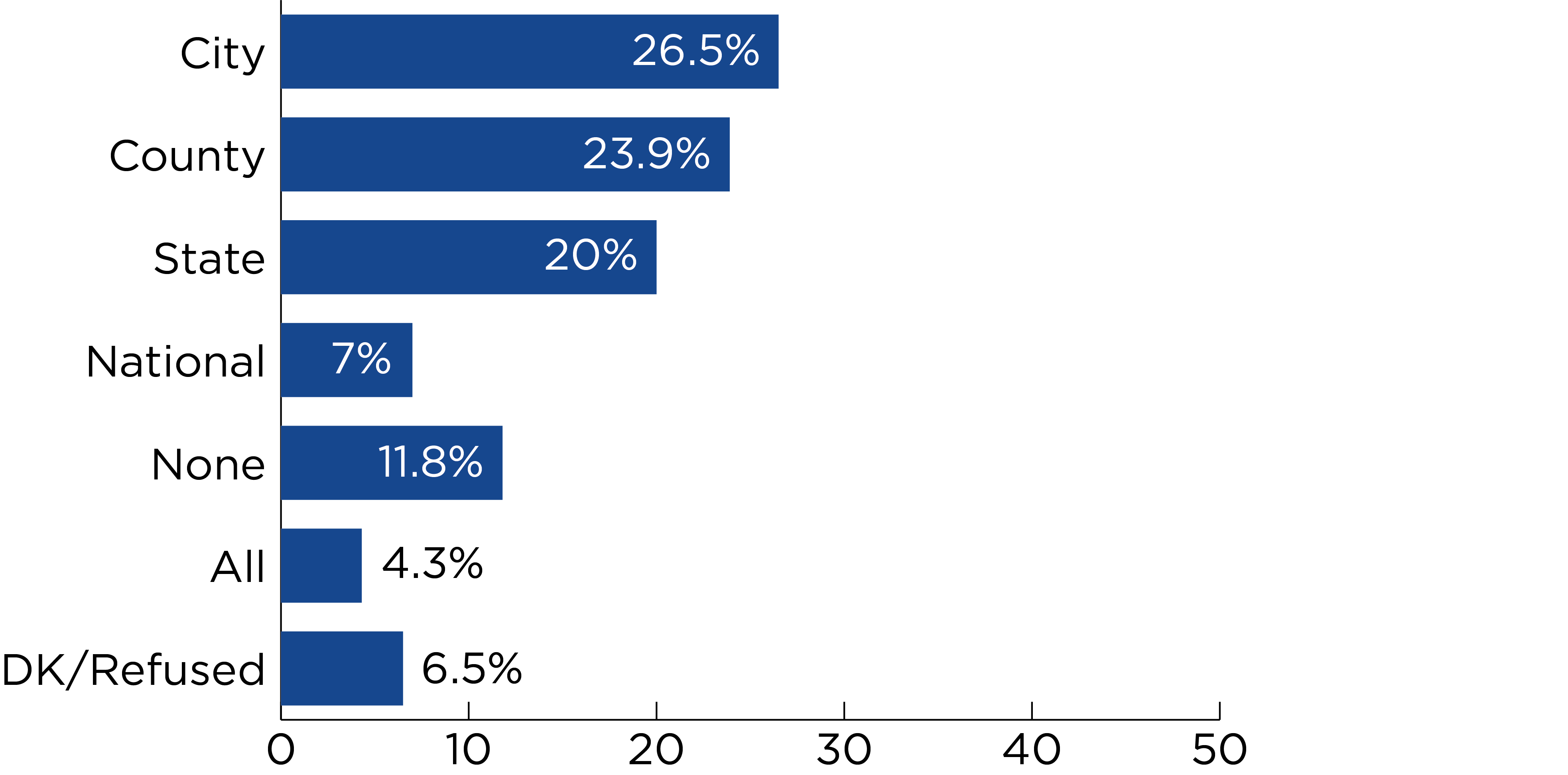The Seventh Annual Idaho Public Policy Survey was conducted November 13-21, 2021, and surveyed 1,000 adults who currently live in Idaho. The sample is representative of the state’s population, both geographically and demographically, with a simple random sampling margin of error of +/- 3.1%. The survey covered a wide variety of topics, including growth, housing, transportation, state budgeting, taxes, education, the environment, and COVID-19. GS Strategy Group conducted the survey by cell phone (43%), landline phone (17%), online (30%), and text message (10%).
- Overall Idahoans (46%) believe the state is heading in the right direction, but many (41%) feel it is off on the wrong track. The gap between these two views has gone from 30 points in 2019 to five points this year.
- Idahoans’ legislative priorities remain unchanged from previous years, with Education viewed as the top issue for the Idaho Legislature to address. Housing saw the largest increase in priority ranking over last year (eight points).
- Idahoans are split on what should be done with the state’s budget surplus. Most favor increasing teachers’ pay (26%), giving tax relief (24%), or increasing workforce and affordable housing (23%).
- A quarter of Idahoans have experienced financial hardship since the start of the COVID-19 pandemic, with 26% reporting that they are worse off financially and 25% that have had trouble paying their bills.
- More than half of Idahoans (51%) would recommend a friend or family member get the COVID-19 vaccine. Almost as many Idahoans (46%) indicate vaccination should be a choice rather than a mandate.
- There is increasing concern surrounding growth issues, including housing and property taxes. Most Idahoans believe the state is growing too fast (71%).
- Idahoans strongly support funding full-day kindergarten, with over 60% of Republicans, Democrats, and Independents alike in favor of the proposal.
- Political engagement in Idaho is high relative to national numbers, with nearly one-third (32%) of Idahoans reporting they have contacted a public official within the last year.
Each year, Idahoans’ assessment of the state’s direction serves as an indicator of overall approval. More Idahoans believe the state is headed in the right direction (46%) than on the wrong track (41%). These numbers continue a four-year trend where the gap between these two opinions has continued to close, shrinking from 30 points in 2019 to only five points this year. Most Republicans (56%) and Independents (46%) feel the state is headed in the right direction, compared to 30% of Democrats. Those who moved to Idaho within the last 10 years tend to have a more positive outlook (55%) than those who have lived here longer (44%).

To determine which issues Idahoans most prioritize, respondents rated the importance of the Idaho Legislature addressing a range of policy issues on a scale of 1-10 (1 being not at all important while 10 is extremely important). These issues include jobs and the economy, education, transportation, housing, healthcare, taxes, and the environment. Respondents were not asked about specific policy preferences in these questions, only to identify which areas they feel most warrant the legislature’s attention. Results of these ratings have been relatively stable over time.

Education is once again Idahoans’ most important issue to address, with 71% of respondents rating its importance 8-10. It is the highest rated issue among both Independents (73%) and Democrats (79%), and the second highest issue among Republicans (66%).
Jobs and the economy is the second highest rated issue overall, with 62% of Idahoans rating it 8-10, a four point decline from last year. It is the highest rated issue among Republicans, with 67% rating it 8-10 and second highest for Independents (61%). For Democrats (59%), it is the fifth highest priority.
The third highest rated issue for Idahoans is healthcare, with 59% rating its importance 8-10. While it is the second highest rated issue among Democrats (79%), it is the fourth highest rated issue among both Republicans (52%) and Independents (59%).
Housing increased the most in priority over previous years. More than half of Idahoans (57%) rated its importance 8-10, making it fourth highest overall, an eight point increase over last year’s 49%. It is the fifth highest issue among Republicans (50%), third highest among Independents (60%), and fourth highest among Democrats (68%).
Half of Idahoans (50%) give an 8-10 rating to the environment. For Democrats (77%) it is the third highest rated issue, while it is the fifth highest for Independents (51%) and sixth highest for Republicans (39%).
Taxes (45%) and transportation (36%) are the lowest rated issues overall, with less than half of Idahoans rating them 8-10. Compared to last year, taxes declined three points while transportation stayed the same. Taxes are the third highest rated issue among Republicans (52%), sixth highest among Independents (44%), and lowest rated issue among Democrats (33%). Conversely, transportation is the lowest rated issue among Republicans (31%) and Independents (37%), and the sixth highest rated issue among Democrats (48%).
For the first time since 2017, we asked respondents to identify the main reason they live in Idaho. The results are largely unchanged. Family remains the main reason Idahoans live in the state (45%). This represents a five point increase from the last time we asked the question. It is distantly followed by quality of life (16%) and work (14%) as the main reason.
Those who moved to Idaho within the last 10 years exhibit some differences compared to those who have lived here longer. While family remains the top reason for both groups, it is far more prevalent among longtime residents (48%) than newcomers (32%). Newcomers are more likely to name work as the main reason they live in Idaho (23%) compared to longtime residents (11%). They are also more likely to cite political climate as their main reason (9%) compared to longtime residents (5%).

Idahoans interact with various levels of government in their daily lives, including city, county, state, and national governments. Those interactions can result in many different experiences. We asked Idahoans to identify which level of government they feel best responds to their needs. Results indicate that Idahoans feel that the local governments closest to them – cities (27%) and counties (24%) – are most responsive, followed by the state (20%). Few respondents (7%) feel the national (federal) government responds to their needs. About 12% of Idahoans feelno level of government is responsive, while 4% feel all are equally responsive.
